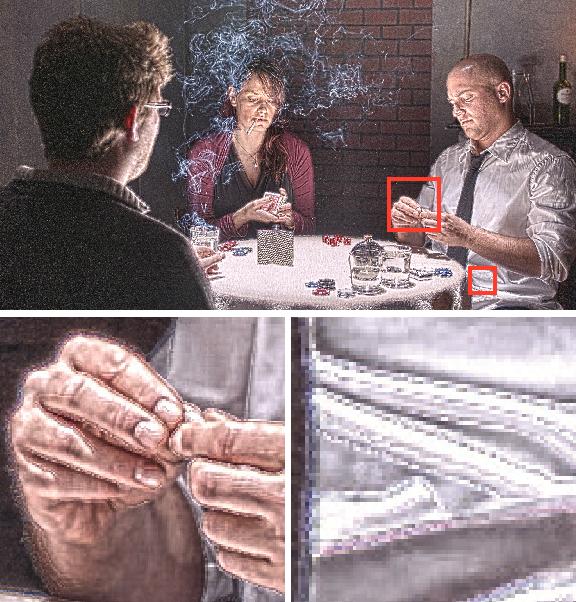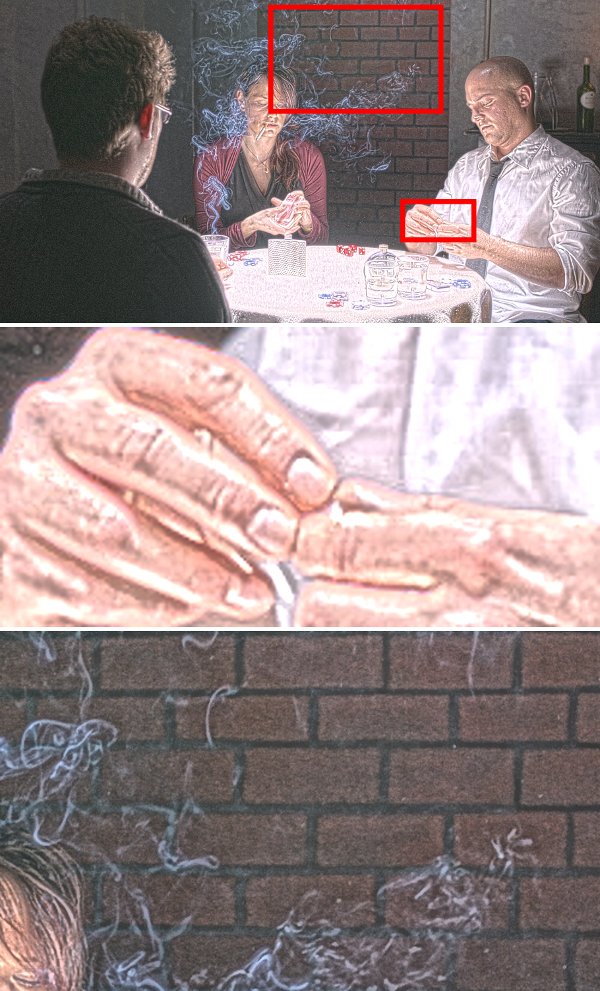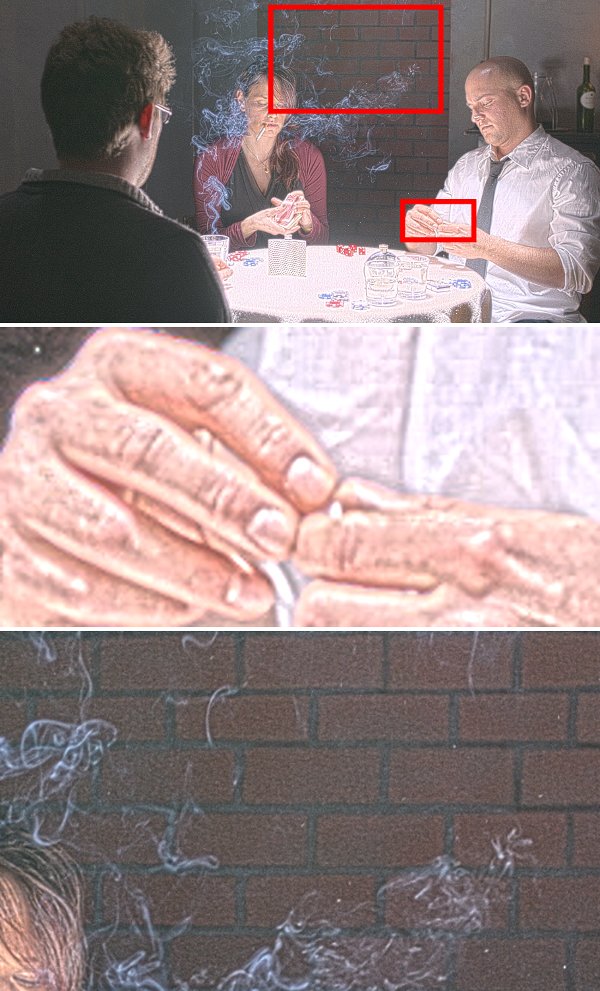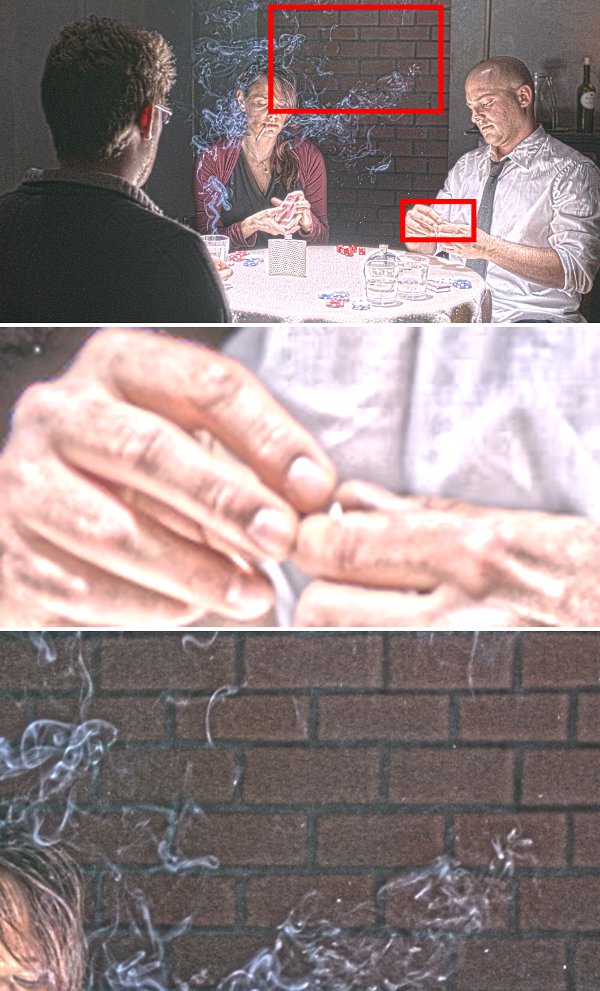

As indicated in the figure above, our algorithm can be divided into three main parts, where each part contains novel key features that are central for the goals we set out to achieve:
We propose a fast method for computing local display-adaptive tone curves. The tone curves minimize contrast distortions introduced by the mapping while controlling the visibility of noise, and their shapes are filtered over time to avoid temporal flickering.


The filter used for separating image details is constructed by analyzing current edge-preserving filters and their potential problems in the context of tone mapping. From the observations, and a unified formulation of bilateral filtering and anisotropic diffusion, we design a fast edge-stopping non-linear diffusion approximation for detail enhancement without ringing artifacts.






In addition to the use of noise-aware tone curves adaptive to image noise, the visibility of noise is also controlled in the processed detail layer by taking into account the noise characteristics of the original base layer and the tone-mapped base layer. This is to allow the user to preserve or artistically enhance local contrast and details by scaling the detail layer, while still making sure that the noise is kept below the visibility threshold.

| Download | Size | Description |
|---|---|---|
 Paper Paper |
28.9Mb | Main paper |
 Supplementary document Supplementary document |
5.5Mb | Supporting document with additional figures and results. |
 Presentation Presentation |
38.3Mb | Presentation from Siggraph Asia 2015, Kobe. |
 Video Video |
94.3Mb | The video overview presented above. |
 Source code Source code |
- | Code available for research purposes on request (for more information, please contact gabriel.eilertsen@liu.se). |
@article{Eilertsen:2015,
author = {Eilertsen, Gabriel and Mantiuk, Rafa\l K. and Unger, Jonas},
title = {Real-time noise-aware tone mapping},
journal = {ACM Transactions on Graphics (TOG)},
volume = {34},
number = {6},
year = {2015},
numpages = {15},
url = {http://doi.acm.org/10.1145/2816795.2818092},
doi = {10.1145/2816795.2818092},
publisher = {ACM},
address = {New York, NY, USA},
keywords = {tone mapping, video tone mapping, hdr imaging},
}